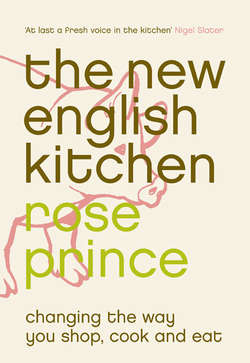Читать книгу The New English Kitchen: Changing the Way You Shop, Cook and Eat - Rose Prince - Страница 23
basic yeast bread
ОглавлениеThis recipe works well in a food mixer and can be used for the classic, rectangular tin loaf or for any other shape. Strong white flour, malted wheat, wholemeal or a mixture all work well.
Makes 2 small loaves
700g/1 1/2lb flour
2 x 7g sachets of fast-action (easy-blend) yeast
1 heaped teaspoon fine salt or 2 teaspoons soft sea salt crystals
1 heaped teaspoon unrefined sugar
425ml/14fl oz water, at blood temperature
1 tablespoon vegetable or olive oil (optional – see here)
Put the flour in a large bowl with the yeast, salt and sugar and stir until combined. Make a well in the centre and add the warm water, stirring all the time until the ingredients form a sticky dough. Continue to knead the bread – by hand (see above) for 15 minutes, or for 5 minutes on the slow setting of a food mixer fitted with a dough hook. If the dough is too sticky, add more flour; if it is too dry, work in a little water.
The dough will become smooth and elastic as the gluten forms. When you have finished kneading it, put it into an oiled bowl (if you are using the oil), cover with a cloth and leave in a warm, draught-free spot for 1 1/2–2 hours, until doubled in size (or leave for longer at cool room temperature, or overnight in the fridge).
Knock the air out of the dough, kneading the oil into it. Prepare two 480g/1lb loaf tins by brushing all over the inside surface with a little oil. Divide the dough in half, shape each piece into a fat sausage and put into a tin or make 2 rounds and place each in the centre of a baking sheet. Scatter flour on top, cut a slash lengthways down the centre with a sharp knife and leave to rise again, uncovered, for 20–30 minutes. Preheat the oven to 230°C/450°F/Gas Mark 8.
Bake the loaves for 30–40 minutes. They are ready when they come easily out of the tin and sound hollow when tapped on the base with a finger.
